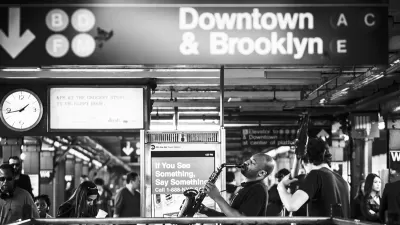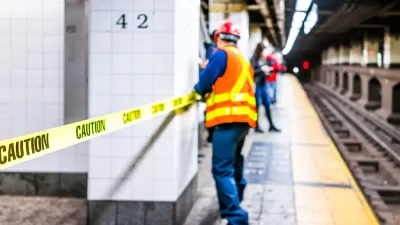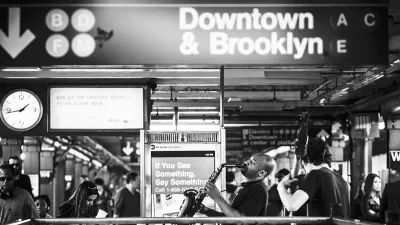In New York's subway, stations are not the only historic parts of the 113-year-old system. Essential communications infrastructure responsible for keeping the trains running belongs in a museum, explaining the cause of many recent delays.

New York's Metropolitan Transportation Authority, the state agency that operates New York's subway, may be ready for open gangway subway cars, but the more pressing question is, how long will it take to replace the subway's aging signal system?
"After a long period of improvement, the system’s reliability has dropped significantly, with delays more than doubling over the last five years, according to a review of data from the Metropolitan Transportation Authority," wrote The New York Times transit reporter, Emma G. Fitzsimmons in February.
A top reason for the delays is aging equipment that "dates back to the 1930s." The signal network, which controls when trains can move down the tracks, lies at the heart of the subway's latest operating woes, is explored by Fitzsimmons in this indepth piece on May 1.
But the rollout of a new signal network is unfolding at a glacial pace even as the subway system is straining under the demands of a booming ridership. Two decades after the agency began its push to upgrade signals, work has been completed on just one line.
New York's signaling equipment is so antiquated that it is "not supported by the rail industry; we are fully self-sufficient and self-sustaining," using their own signal shop, explains the narrator in this MTA video that makes the case for replacing the ancient equipment with modern communications-based train control (CBTC).
"At the current pace, transforming every subway line could take half a century and cost $20 billion," adds Fitzsimmons.
That may be an optimistic forecast, though. A November 2015 post, one of three by Planetizen editor James Brasuell on train delays and lack of modernization plaguing the subway, claims that at "the current pace of installation, the subway system as a whole won’t be converted to CBTC for another 175 years."
Also see the Regional Plan Association video on CBTC and New York's subway system.
Fitzsimmons next transit assignment was across the pond in the world's oldest, yet by New York's standards, also one of the most modern: the London Tube. "It was like being dropped into an alternate universe where people actually like their subway," she reported.
Hat tip to Mark Boshnack.
FULL STORY: Key to Improving Subway Service in New York? Modern Signals

Alabama: Trump Terminates Settlements for Black Communities Harmed By Raw Sewage
Trump deemed the landmark civil rights agreement “illegal DEI and environmental justice policy.”

Study: Maui’s Plan to Convert Vacation Rentals to Long-Term Housing Could Cause Nearly $1 Billion Economic Loss
The plan would reduce visitor accommodation by 25% resulting in 1,900 jobs lost.

Planetizen Federal Action Tracker
A weekly monitor of how Trump’s orders and actions are impacting planners and planning in America.

Wind Energy on the Rise Despite Federal Policy Reversal
The Trump administration is revoking federal support for renewable energy, but demand for new projects continues unabated.

Passengers Flock to Caltrain After Electrification
The new electric trains are running faster and more reliably, leading to strong ridership growth on the Bay Area rail system.

Texas Churches Rally Behind ‘Yes in God’s Back Yard’ Legislation
Religious leaders want the state to reduce zoning regulations to streamline leasing church-owned land to housing developers.
Urban Design for Planners 1: Software Tools
This six-course series explores essential urban design concepts using open source software and equips planners with the tools they need to participate fully in the urban design process.
Planning for Universal Design
Learn the tools for implementing Universal Design in planning regulations.
Caltrans
Smith Gee Studio
Institute for Housing and Urban Development Studies (IHS)
City of Grandview
Harvard GSD Executive Education
Toledo-Lucas County Plan Commissions
Salt Lake City
NYU Wagner Graduate School of Public Service





























